United Nations Regional Groups
The United Nations Regional Groups are the geopolitical regional groups of member states of the United Nations. Originally, UN member states were unofficially grouped into five geopolitical regional groups. What began as an informal means of sharing the distribution of posts for General Assembly committees has taken on a much more expansive role. Many UN bodies are allocated on the basis of geographical representation. Top leadership positions, including Secretary-General and President of the General Assembly, are rotated among the regional groups. The groups also coordinate substantive policy and form common fronts for negotiations and bloc voting.[1]

History
League of Nations
The precedent of the geographic distribution of seats was set by the United Nation's predecessor, the League of Nations. Under the League's system, a Nomination's Committee was created in order to create election slates for distribution of seats in the Council of the League.[2]
This proved a difficult task as the number of seats was on the Council was constantly changing. However, from 1926 to 1933 an unofficial pattern of distribution emerged where the non-permanent seats on the Council were distributed along the following lines:[2]
- 3 for Latin American states
- 1 for a Scandinavian state
- 1 for a Little Entente state (Czechoslovakia, Romania or Yugoslavia)
- 1 for a member of the British Commonwealth
- 1 for a Far Eastern state
- 1 seat each for Spain and Poland
United Nations
During the drafting of the United Nations Charter, the idea of geographic distribution of seats of the new organisation's bodies was one of the priorities of the drafters. On the United States' recommendation, the very first General Committee of the United Nations was composed of:[2]
- The five permanent members of the Security Council
- 3 Latin American states
- 2 British Commonwealth states
- 2 Eastern European states
- 1 Western European state
- 1 Middle Eastern state
This distribution began the precedent of using regional groups for the allocation of seats in United Nations bodies. For example, the first election to the Security Council used a similar scheme, allocating seats along the following lines:[3]
- The five permanent members of the Security Council
- 2 Latin American states
- 1 British Commonwealth state
- 1 Eastern European state
- 1 Western European states
- 1 Middle Eastern state
Elections to the Economic and Social Council also followed along similar lines, but instead allocated seats to "Near East states" and not "Middle Eastern states."
However, these arrangements were not formal and were based on "Gentlemen’s Agreements" agreed upon by the United States and the Soviet Union regarding the distribution of seats in United Nations bodies.
Reform
Following a wave of decolonization, there were multiple admissions into the United Nations from African, Asian and Pacific states. After the Bandung Conference in 1955, there was increasing solidarity among post-colonial states which led to pressure being put on the United Nations for increased representation of these states. This pressure led to the passage of Resolution 1192 (XII) of 12 December 1957, which established a formal pattern for distribution of seats on the General Committee.[4]
This was followed on 17 December 1963 by Resolutions 1990 (XVIII) and 1991 (XVIII). These resolutions further outlined the distribution of seats on the General Committee, but also outlined how seats would be geographically distributed on the Economic and Social and Security Councils. The resolutions outlined the regions as follow:[5]
- African and Asian states
- Latin American states
- Eastern European states
- Western Europe and Other states
On 20 December 1971 Resolution 2847 (XXVI) formally set up the present distribution system that is in place for the Economic and Social Council. It also split the African and Asian states region into two separate regions, one for Asia and one for Africa.[6]
Finally, on 19 December 1978 Resolution 33/138 was passed by the General Assembly. This resolution called for equitable geographic distribution of the presidency and vice-presidencies of the General Assembly, as well as of the chairmanship of the seven main committees.[7]
Present
The most recent change to the regional grouping system was in 2011, when the Asia Group was renamed the Group of Asia and the Pacific Small Island Developing States, also Asia and the Pacific Group or Asia-Pacific Group, in order to recognise the growing role Pacific island nations play in the United Nations System.[8][9]
As of 2019, Kiribati is the only United Nations Member State that has never joined one of the regional groups.[10]
Overview
Apart from allowing member states with related international interests to liaise, discuss and coordinate their voting and other activities at the United Nations, the main function of the regional groups is to distribute membership quotas in United Nations bodies and leadership positions. According to convention, the non-permanent membership seats of the United Nations Security Council is apportioned between regional groups according to a set formula. Other bodies, such as the United Nations Economic and Social Council and the United Nations Human Rights Committee, also have set membership quotas for each regional group. The position of the President of the United Nations General Assembly rotates amongst the groups on a ten-year cycle (the current rule being that each regional group fills the position twice during the cycle, in effect it rotates on a five-year cycle).
| Regional Group | Number of members | % of members | UNSC permanent members | UNSC elected members | ECOSOC members | HRC members | UNGA President years |
|---|---|---|---|---|---|---|---|
| Africa | 54 | 28 | 0 | 3 | 14 | 13 | 4 and 9 |
| Asia and the Pacific | 53 | 27.5 | 1 | 2 | 11 | 13 | 1 and 6 |
| EEG | 23 | 12 | 1 | 1 | 6 | 6 | 2 and 7 |
| GRULAC | 33 | 17 | 0 | 2 | 10 | 8 | 3 and 8 |
| WEOG | 28+1 | 15 | 3 | 2 | 13 | 7 | 0 and 5 |
| None | 1 | 0.5 | – | – | – | – | – |
| Total UN members | 193 | 100 | 5 | 10 | 54 | 47 | All years |
Populations of regional groups
| Regional Group | Number of members | Population (approx., rounded WP numbers) | % of UN members population |
|---|---|---|---|
| Africa | 54 | 1.14 billion | 15.8% |
| Asia and the Pacific | 53 | 4.24 billion | 58.5% |
| Eastern European | 23 | 340 million | 4.69% |
| Latin American and Caribbean | 33 | 621 million | 8.57% |
| Western European and Others | 28+1 | 904 million | 12.49% |
| None | 1 | 124,000 | 0.00% |
| Total UN members | 193 | 7.24 billion | 100% |
Seating allocations
| Security Council | General Assembly | Economic and Social Council | Human Rights Council |
|---|---|---|---|
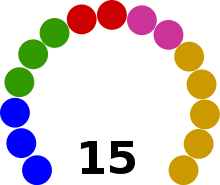 |
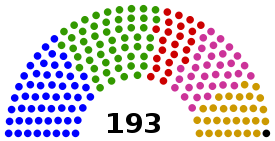 |
 |
 |
|
African Group
Asia and the Pacific Group
Eastern European Group
Latin American and Caribbean States Group (GRULAC)
Western European and Others Group (WEOG)
UN member not in any voting group | |||
The regional groups
African Group
The African Group consists of 54 Members States (28% of United Nations members), and is thus the largest regional group by number of Member States. It is the only regional group that has a territory that coincides with the traditional continent of which its name originates. Its territory is composed entirely of land from Africa.
The African Group has three seats on the Security Council, all non-permanent. The Group also has 14 seats on the United Nations Economic and Social Council and 13 seats on the United Nations Human Rights Council. In the rotation for the election of the President of the United Nations General Assembly, the Group is responsible for electing nationals from its Member States in years ending with 4 and 9; most recently, Sam Kutesa of Uganda was elected to this position in 2014.
Member States of the African Group are as follow:[10]


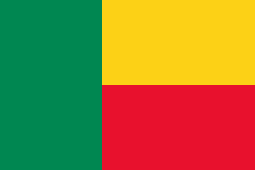


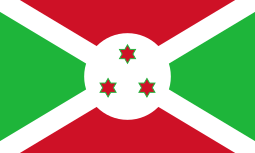
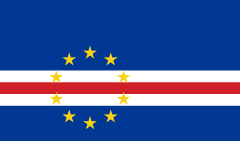

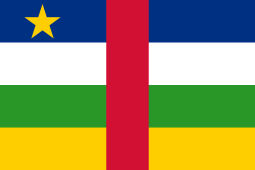

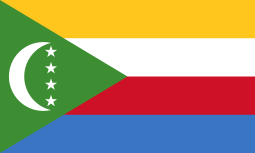





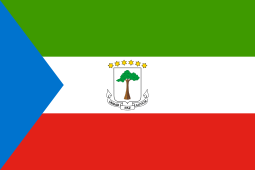


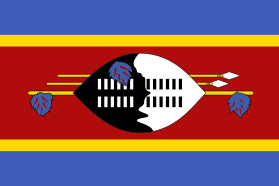

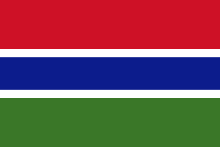




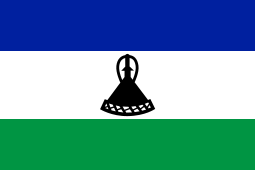


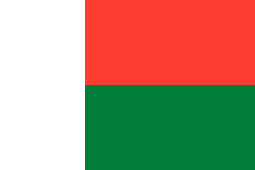


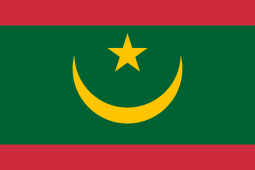
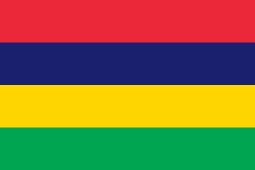



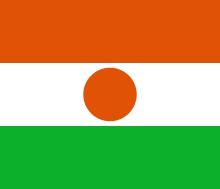

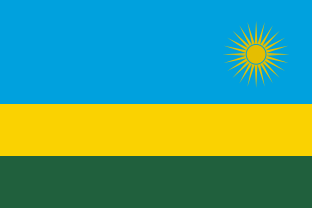
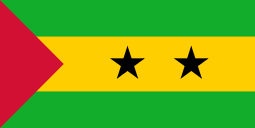

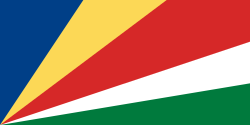
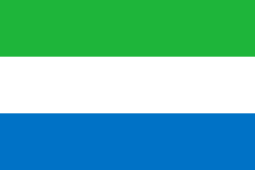


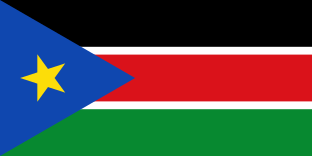

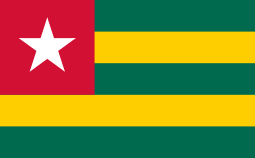





Asia and the Pacific Group
The Group of Asia and the Pacific Small Island Developing States (formerly the Asia Group), or Asia and the Pacific Group, consists of 55 Members States (27.5% of United Nations members) and is the second largest regional group by number of member states after the African Group. Its territory is composed of much of the continents of Asia and Oceania with the exception of a few countries.
Armenia, Azerbaijan, Georgia and Russia are members of the Eastern European Group, while Australia, New Zealand and Israel are members of the Western European and Others Group. Cyprus is the only European Union state which is a member of the Asia and the Pacific Group. Additionally, Turkey participates in meetings of the Asia and the Pacific Group, but is for the purpose of elections considered part of the Western European and Others Group.
The Asia and the Pacific Group has three seats on the Security Council: China's permanent seat, and two non-permanent seats. The Group also has 11 seats on the Economic and Social Council and 13 seats on the Human Rights Council. In the rotation for the election of the President of the United Nations General Assembly, the Group is responsible for electing nationals from its Member States in years ending with 1 and 6; most recently, Peter Thomson of Fiji was elected to this position in 2016.
Member States of the Asia and the Pacific Group are as follow:[10]






















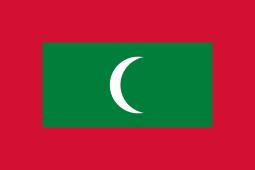
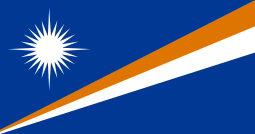
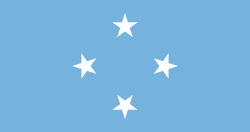







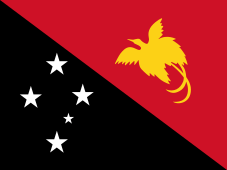



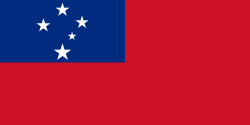








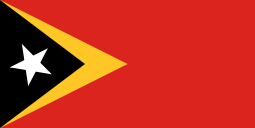





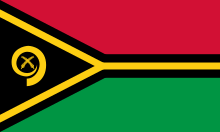


Eastern European Group
The Eastern European Group consists of 23 Members States (12% of United Nations members), and as such is the regional group with the fewest member states. Its territory is composed of land from Eastern Europe, as well as parts of Central Europe Southeast Europe.
The Eastern European Group has two seats on the Security Council: Russia's permanent seat and one non-permanent seat. The Group also has six seats on the Economic and Social Council and six seats on the Human Rights Council. In the rotation for the election of the President of the United Nations General Assembly, the Group is responsible for electing nationals from its Member States in years ending with 2 and 7; most recently, Miroslav Lajčák of Slovakia was elected to this position for 2017.
Members of the Eastern European Group are as follow:[10]
Latin American and Caribbean Group (GRULAC)
The Latin American and Caribbean Group, or GRULAC, consists of 33 Members States (17% of all UN members). Its territory is composed of entirely of land from South and Central America, as well as some islands in the Caribbean and Mexico in North America . Any differences arise from the presence of dependent territories of European countries.[11]
The Latin American and Caribbean Group has two seats on the Security Council, both non-permanent. The Group also has 10 seats on the Economic and Social Council and eight seats on the Human Rights Council. In the rotation for the election of the President of the United Nations General Assembly, the Group is responsible for electing nationals from its Member States in years ending with 3 and 8; most recently, María Fernanda Espinosa of Ecuador was elected to this position in 2018.
Member States of the Latin American and Caribbean Group are as follow:[10]
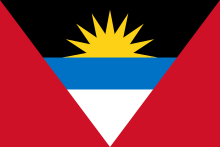

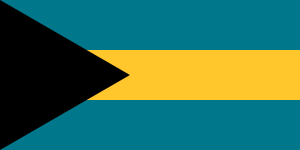














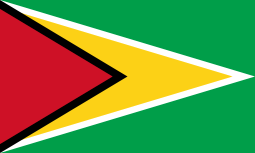

.svg.png)
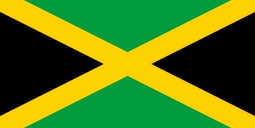





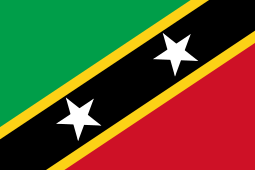
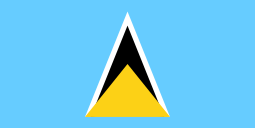

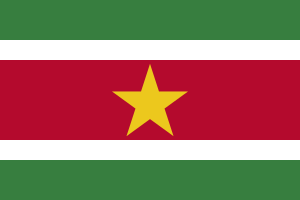



Western European and Others Group (WEOG)
The Western European and Others Group, or WEOG, consists of 28 Members States (15% of United Nations members). Its territory is composed of land dispersed on all of the continents, but mostly centered in Western Europe and North America. Additionally, the United States states acts as an observer, as it is not formally part of any regional group.
Including the United States, the Western European and Others Group has five seats on the Security Council: three permanent seats (France, United Kingdom, United States), and two non-permanent seats. The Group also has 13 seats on the Economic and Social Council and seven seats on the Human Rights Council. In the rotation for the election of the President of the United Nations General Assembly, the Group is responsible for electing nationals from its Member States in years ending with 0 and 5; most recently, Volkan Bozkır of Turkey was elected to this position in 2020.
Member states of the Western European and Others Group are as follow:[10]
Observers
The following states participate in the Western European and Others Group as observers only:
Special cases
Cyprus
Cyprus, an EU member state, is neither a member of WEOG or the Eastern European Group. Due to its geographical location and the close ties with Russia, Cyprus decided to remain neutral between the two European Groups and thus is a member of the Asia and the Pacific Group.
Holy See
The Holy See participates in the Western European and Others Group as an observer only.[12]
Israel
Israel is geographically in Asia, but it became a temporary member of the Western European and Others Group in 2000. It became a permanent member in 2014.[13]
Kiribati
As of 2010, Kiribati (geographically in Oceania) has never been elected to be a member of any regional group, despite other Oceania nations belonging to the Asia and the Pacific Group. Until 2017, despite its membership in the United Nations, Kiribati had never delegated a permanent representative. In September 2017, Teburoro Tito became the country's first permanent representative.[10]
Palestine
The Palestine Liberation Organization has participated in the Asia and the Pacific group since 2 April 1986 as an observer.[14][15][16][17]
Turkey
Turkey participates fully in both WEOG and Asia and the Pacific Group, but for electoral purposes is considered a member of WEOG only.[18]
United States of America
The United States of America voluntarily chooses not to be a member of any group, and attends meetings of the Western European and Others Group as an observer only. However, it is considered to be a member of WEOG for putting forward candidates for electoral purposes in the United Nations General Assembly.[19][20][21]
Calls for reform
The great variation in size (from 21 to 53) between the regional groups is problematic in that it may mean that equal representation is more difficult to achieve.[3] Additionally, some of the groups might be in need of reforms due to political changes within the group. Many members of the Eastern European Group have been in recent years been aligning themselves with the Western European and Others Group due to their admission into the North Atlantic Treaty Organization and the European Union. Additionally, some members of the Western European and Others Group also feel disenfranchised due to increased coordination between European Union states that are in the group.[3]
In 1995, the Australian Government proposed that the regional groups be reorganised in seven groups as follows:
- Western Europe (24 members)
- Central and Eastern Europe (22 members)
- Middle East and the Maghreb (19 members)
- Africa (43 members)
- Central Asia and the Indian Ocean (17 members)
- East Asia and Oceania (25 members)
- America (35 members)
This proposal would create a homogenous Middle-Eastern group, as well as met the demand of South Pacific state who have called for their own region.[3]
In 1997, a Canadian study proposed that the regional groups be reorganised into nine groups as follows:
- Eurasia (21 members)
- Asia/Pacific (25 members)
- Mediterranean/Gulf (19 members)
- Northern Europe (20 members)
- Southern Europe (19 members)
- North Africa (23 members)
- South Africa (23 members)
- America (19 members)
- Caribbean (16 members)
This proposal would create groups of similar size, while also keeping in mind the local politics of the regions.[3]
In 2000, the government of Nauru, in its general debate address, called for a new regional group from Oceania. This new group would give more representation to pacific island nations, who are at present grouped together with the Middle-East, Central Asia and East Asia, limiting their opportunities. Aside from Nauru, this proposed bloc may also include Australia and New Zealand (both in the WEOG), Japan, South Korea, the ASEAN countries, and the rest of Oceania.[22]
Gallery
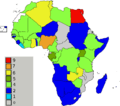 Members of the African Group colour-coded for the number of years each spent on the Security Council as of 2010
Members of the African Group colour-coded for the number of years each spent on the Security Council as of 2010- Members of the Latin American and Caribbean Group colour-coded for the number of years each spent on the Security Council as of 2010
 The Eastern European Group in 2010, with the years each member spent in the United Nations Security Council, including former members represented as outlines
The Eastern European Group in 2010, with the years each member spent in the United Nations Security Council, including former members represented as outlines A map showing from which countries from the Eastern European Group has there been elected a President of the United Nations General Assembly as of September 2017.
A map showing from which countries from the Eastern European Group has there been elected a President of the United Nations General Assembly as of September 2017. Members of the Western European and Others Group colour-coded for the number of years each spent on the Security Council as of 2010
Members of the Western European and Others Group colour-coded for the number of years each spent on the Security Council as of 2010
See also
References
- The GA Handbook: A practical guide to the United Nations General Assembly (PDF) (2 ed.). New York: Permanent Mission of Switzerland to the United Nations. 2017. p. 124. ISBN 978-0-615-49660-3.
- Agam, Hasmy, and Sam Daws, Terence O'Brien and Ramesh Takur (26 March 1999). What is Equitable Geographic Representation in the Twenty-First Century (PDF) (Report). United Nations University. Retrieved 5 March 2019.CS1 maint: uses authors parameter (link)
- Winkelmann, Ingo (2010). "Regional Groups in the UN" (PDF). In Volger, Helmut (ed.). A Concise Encyclopedia of the United Nations (2nd ed.). Leiden: Martinus Nijhoff Publishers. pp. 592–96. ISBN 978-90-04-18004-8. Retrieved 4 March 2019.
- United Nations General Assembly Session 12 Resolution 1192 (XII). Composition of the General Committee of the General Assembly A/RES/1192(XII) 12 December 1957. Retrieved 5 March 2019.
- United Nations General Assembly Session 18 Resolution 1991 (XVII). Question of Equitable Representation on the Security Council and the Economic and Social Council A/RES/1991(XVIII) 17 December 1963. Retrieved 5 March 2019.
- United Nations General Assembly Session 26th Resolution 2847 (XXVI). Enlargement of the Economic and Social Council A/RES/2847(XXVI) 20 December 1971. Retrieved 5 March 2019.
- United Nations General Assembly Session 33rd Resolution 33/138. Question of the Composition of the Relevant Organs of the United Nations : Amendments to Rules 31 and 38 of the Rules of Procedure of the General Assembly A/RES/33/138 19 December 1978. Retrieved 5 March 2019.
- "UN Recognises The Pacific With Name Change". Secretariat of the Pacific Regional Environment Programme. Secretariat of the Pacific Regional Environment Programme. 3 September 2011. Retrieved 26 February 2019.
- "Asian group of nations at UN changes its name to Asia-Pacific group". Radio New Zealand. Wellington. 1 September 2011. Retrieved 26 February 2019.
- "United Nations Regional Groups of Member States". Department for General Assembly and Conference Management. United Nations. n.d. Retrieved 5 March 2019.
- "Latin American and Caribbean Group (GRULAC)". Ministry of Foreign Affairs of the Republic of Colombia. Retrieved 2012-10-18.
- "Groups of Member States | outreach.un.org.mun". outreach.un.org. Retrieved 2017-08-10.
- Kerry, John (3 December 2013). "Israel Invited To Join the Western European and Others Group (WEOG) in Geneva". U.S. Mission to International Organizations in Geneva.
- United Nations General Assembly (7 July 1998). "UNGA Resolution 52/250" (PDF). United Nations. Archived from the original (PDF) on May 22, 2011. Retrieved 2011-01-10.: "Palestine enjoys full membership in the Group of Asian States and the Economic and Social Commission for Western Asia."
- Permanent Observer Mission of Palestine to the United Nations. "Status of Palestine at the United Nations". United Nations. Archived from the original on 2011-06-06. Retrieved 2011-01-10.: "On 2 April 1986, the Asian Group of the U.N. decided to accept the PLO as a full member."
- United Nations Conference on Trade and Development. "Government structures". United Nations. Archived from the original on 2010-06-13. Retrieved 2011-01-10.: "At present, the PLO is a full member of the Asian Group of the United Nations, ..."
- Doebbler, Curtis (27 November 2009). "International Law and Palestinian Independence: A View from Palestine". JURIST. University of Pittsburgh School of Law. Retrieved 2011-01-10.: "Palestine is already recognised as a full member of the Asian Group of States in the UN, and often thereby submits and influences UN resolutions. Being a member state would also give the Palestinian representative to the UN the right to vote on General Assembly resolutions, among other UN decisions."
- United Nations Regional Groups of Member States.
- Justin Gruenberg: An Analysis of United Nations Security Council Resolutions Archived 2010-06-10 at the Wayback Machine (p. 479).
- UN-HABITAT's Global Report on Human Settlements, 2007 Archived May 15, 2011, at the Wayback Machine (p. 335, n. 2). UNAIDS, The Governance Handbook, January 2010 (p. 29, first note).
- Official UN list of Regional Groups Archived June 6, 2011, at the Wayback Machine (p. 2, note).
- United Nations General Assembly Session 55 Official Records 55/PV.25. 25th plenary meeting. General Debate A/55/PV.25 page 21. Vinci Niel Clodumar Nauru (in English). 20 September at 15:00.
External links
- UNAIDS, The Governance Handbook, January 2010 (pp. 28,29); PDF document at UN-AIDS website.